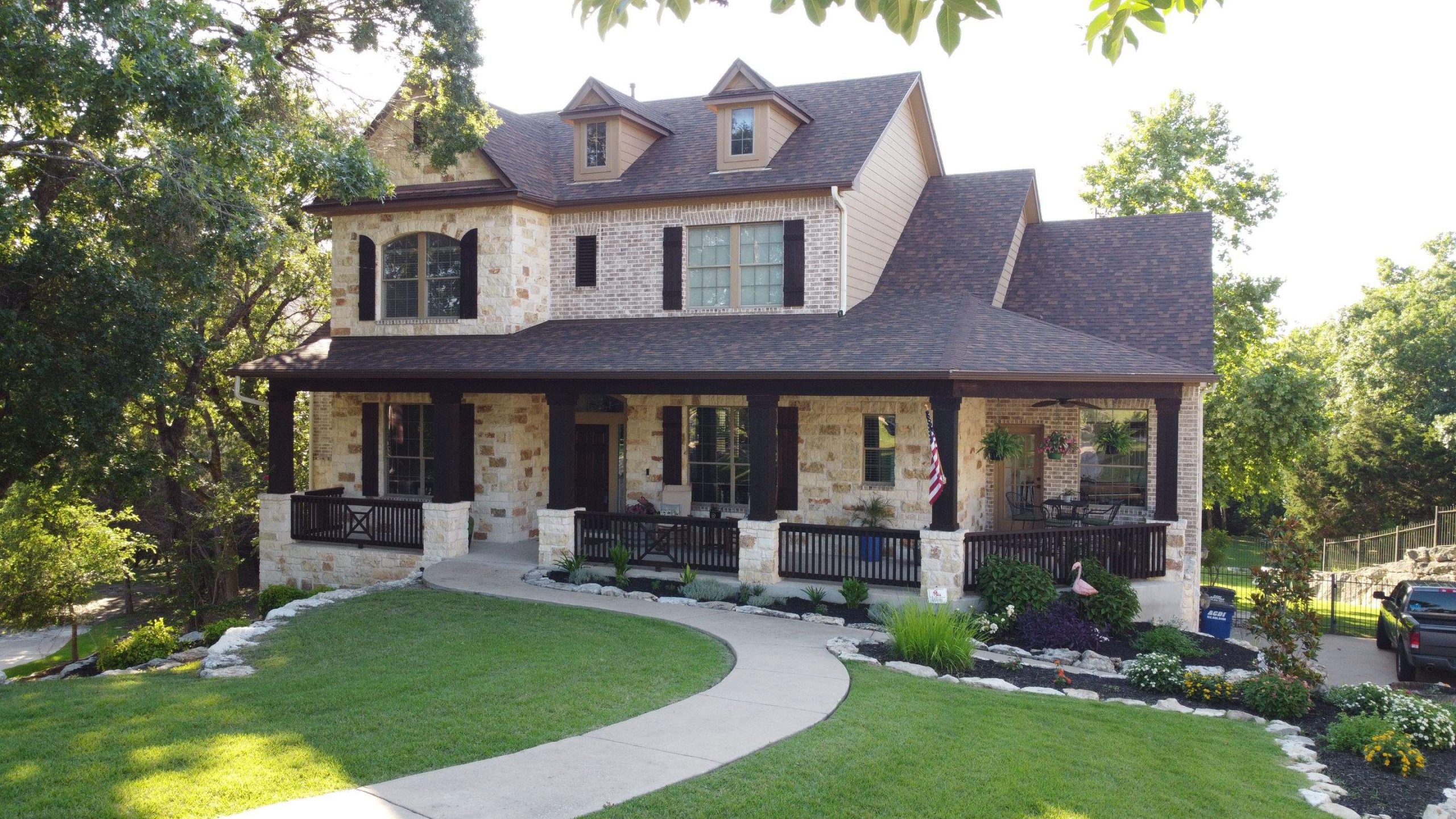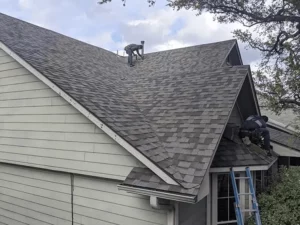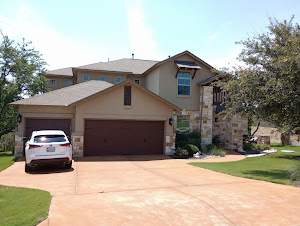
Understanding the importance of roof ventilation is a crucial aspect of maintaining a healthy and comfortable home. Roof ventilation is responsible for regulating the temperature inside your house during both the summer and winter months. It helps to remove excess heat and moisture, reducing the potential for damage to your roof and also improving the overall energy efficiency of your home. Without proper roof ventilation, homeowners may face issues such as mold growth, roof deterioration, and skyrocketing energy bills. Thus, the significance of roof ventilation cannot be overstated.
The installation of roof ventilation is not a simple task and should be handled with the utmost care. This is because the effectiveness of any ventilation system is largely dependent on its installation. Incorrect placement or improper handling can result in poor ventilation, which can subsequently lead to the very problems you intend to avoid.
Proper installation ensures that there is a balanced air intake and exhaust and that the ventilation system can perform at its optimum level. Additionally, professional installation guarantees that the structural integrity of your roof is not compromised. Thus, for the longevity of your roof and the comfort of your home, proper installation of roof ventilation is of paramount importance.
Understanding Roof Ventilation
Understanding the Definition and Purpose of Roof Ventilation
The first step in understanding roof ventilation is knowing its definition and purpose. Fundamentally, roof ventilation is a system designed to provide a continuous flow of air through the attic space, helping to reduce heat and moisture build-up. It aids in keeping the attic cooler in summer and drier in winter, which in turn conserves energy, reduces utility bills, and prolongs the lifespan of your roof.
Different Types of Roof Ventilation Systems
Next, let’s delve into the different types of roof ventilation systems. There are primarily two types: passive systems and powered systems. Passive systems, which include ridge vents, soffit vents, and gable vents, rely on natural airflow to work. The hot air rises and escapes through the higher openings, while cool air is drawn in through the lower openings. On the other hand, powered systems use electric or solar-powered fans to force air out of the attic. The choice between passive and powered systems depends on numerous factors such as your local climate, roof design, and personal preference.
How Does Roof Ventilation Work?
Now, how does roof ventilation work? Essentially, it operates on the principle of air circulation. In warmer months, as the sun heats the roof, the air inside the attic becomes hot. This hot air, if not expelled, can cause damage to the roof structure and shingles. A well-installed roof ventilation system allows this hot air to escape, drawing in cooler air from outside to replace it. During colder months, a good ventilation system prevents the build-up of condensation by maintaining a stable temperature inside the attic.
In summary, roof ventilation is a crucial aspect of home maintenance that aids in controlling temperature and moisture levels, thereby enhancing the overall energy efficiency and lifespan of your roof. Whether you choose a passive or powered system, the key to effective roof ventilation lies in its proper installation.
The Installation Process
The Pre-Installation Inspection and Planning
The process of roof ventilation installation begins with a pre-installation inspection and planning. This critical step allows professionals to assess the current state of your attic and roof, determining the most suitable ventilation system for your unique needs, be it passive or powered. They consider factors such as your roof’s slope, the size of your attic, and the local climate. A thorough inspection can help identify any pre-existing issues that might impact the installation, such as damaged insulation, leaks, or structural problems. With a solid plan in place, you can avoid unnecessary complications down the line.
How to Install the Roof Ventilation
Moving on to the actual installation, the process involves a series of steps that must be executed with precision for optimal results. First, the installer will mark the spot for the vent in the roof, ensuring it’s in an optimal location for air circulation. Next, they’ll cut a hole in the roof, install the vent, and secure it with nails or screws. If a powered system is being installed, it will also be wired to the home’s electrical system. The installer needs to ensure that the vent is properly sealed to prevent any water leaks.
Challenges You Can Encounter During the Installation
Despite careful planning and execution, the installation of roof ventilation systems can encounter challenges. For instance, a common issue is the improper placement of vents, which can hinder air circulation. This can be avoided by adhering to the proper spacing guidelines and ensuring the vents are placed at the highest point of the roof. Another challenge is dealing with unexpected roof damage discovered during the installation process. In this situation, it’s crucial to address the issue immediately to prevent further complications. Other challenges include weather conditions, which can delay the installation, and electrical issues when installing powered systems. It’s key to have a contingency plan to tackle these challenges while ensuring the safety and effectiveness of the installation process.
Post-Installation Considerations
The post-installation phase is equally crucial to the success of your roof ventilation system. After the initial installation, an immediate inspection and testing of the newly installed ventilation system will be conducted. This involves checking the efficiency of the system, ensuring that there is adequate airflow, and confirming that the vents are correctly sealed and insulated. The inspection also includes a thorough testing of the system under different weather conditions to ensure it performs optimally, regardless of the climate.
The Importance of Maintenance and Inspection
Maintenance is the key to the longevity of your roof ventilation system. It is recommended to clean your vents periodically to prevent dust and debris build-up, which can hinder the system’s performance. It’s also important to ensure that the insulation surrounding the vents remains intact, as damaged insulation can lead to energy loss. Regular checks for any signs of wear and tear can help detect potential issues before they escalate into significant problems.
Signs That it Needs Repair or Replacement
Over time, even with regular maintenance, your roof ventilation system may exhibit signs that it needs repair or replacement. These signs may include unusually high indoor temperatures, excessive moisture in the attic, or visible damage to the vents or surrounding roof area. If you notice any of these indicators, it’s advisable to seek professional help immediately to diagnose the issue and determine whether a repair or a complete system replacement is necessary.
Benefits of Proper Roof Ventilation Installation
The next significant aspect to consider after the installation and maintenance of a roof ventilation system is understanding its benefits. A properly installed roof ventilation system yields several advantages that make the investment worthwhile.
Improves Energy Efficiency
Firstly, a well-ventilated roof improves energy efficiency significantly. During the summer months, a roof without proper ventilation traps heat, causing the air conditioning system to work harder to cool down the house. Conversely, a well-ventilated roof allows hot air to escape, thereby reducing the cooling load on your air conditioning system. This not only keeps your home cooler but also reduces energy consumption, leading to lower utility bills.
Extends the Lifespan of Your Roof
Secondly, a well-ventilated roof can extend the lifespan of your roof. Extreme temperatures and humidity can damage roofing materials over time. Proper ventilation helps to mitigate these effects by maintaining a more consistent temperature and reducing moisture levels, thereby prolonging the roof’s life.
Enhanced Indoor Air Quality
Enhanced indoor air quality is another significant advantage of proper roof ventilation. It allows fresh air to circulate in your home, reducing the buildup of pollutants and allergens that can compromise indoor air quality. This can significantly improve your living environment, particularly for those with allergies or respiratory issues.
Prevents the Growth of Mold and Mildew
Lastly, roof ventilation plays a crucial role in preventing the growth of mold and mildew. Both thrive in damp conditions, which can be prevalent in poorly ventilated attics. By reducing moisture buildup, roof ventilation helps to keep these harmful fungi at bay, protecting both your home and the health of your household.
In conclusion, a properly installed and maintained roof ventilation system can bring about considerable benefits, from improving energy efficiency and extending the roof’s lifespan to enhancing indoor air quality and preventing mold and mildew growth. It’s more than just a component of your roof; it’s a vital part of maintaining a healthy, comfortable, and efficient home.
Hiring a Professional Roofing Contractor
The Benefits of Professional Installation
In your quest to enjoy the numerous benefits of roof ventilation installation, such as improved energy efficiency, a longer roof lifespan, enhanced indoor air quality, and a mold-free attic, you might consider hiring a professional roofing contractor. Though it might seem tempting to make this a DIY project, hiring a professional roofer comes with its distinct advantages. For starters, roofing contractors have the necessary knowledge and experience to install roof ventilation systems properly and safely. They can assess your roof’s specific needs and recommend the best solutions. Furthermore, they have access to the right tools and quality materials, which ensure the durability and effectiveness of the installed ventilation system.
Key Aspects to Consider When Choosing a Roofing Contractor
When choosing a roofing contractor, it’s crucial to consider a few key aspects. Look for a contractor with a solid reputation for quality work. You can find this information through online reviews, or by asking for references from past clients. Ensure that the contractor is licensed and insured to protect yourself from any potential liabilities. Additionally, check if the contractor has significant experience with roof ventilation installation.
Ask Some Pertinent Questions
Before you finalize the contractor for your roof ventilation project, be sure to ask some pertinent questions. Ask about their experience with similar projects, their proposed timeline, and the total cost of the project. You could also inquire about the specific type of ventilation system they plan to install and why they believe it’s the best fit for your home. It’s also essential to ask about their warranty policy, to ensure you’re covered in case of any future issues.
Hiring a professional roofing contractor can ensure your roof ventilation system is installed correctly, providing you with a more comfortable, healthier, and energy-efficient home. By taking the time to choose the right contractor, you can ensure the installation goes smoothly and yields the expected benefits.
Conclusion
In conclusion, roof ventilation installation is a crucial part of maintaining a healthy, comfortable, and energy-efficient home. It is a process that requires professional knowledge, experience, and the right tools and materials—elements that a competent roofing contractor brings to the table. When executed correctly, roof ventilation creates a balance between air intake and exhaust, thereby preventing moisture buildup, regulating indoor temperature, and extending the lifespan of the roof. It also helps in reducing energy costs by reducing the load on heating and cooling systems.
Selecting a reputable, licensed, and insured contractor is key to ensuring a successful roof ventilation installation. The right professional will not only guide you in choosing the most appropriate ventilation system for your home but also provide a clear timeline, cost estimate, and warranty policy. By asking about their previous similar projects, you can get a good sense of their expertise and reliability.
Remember, a well-ventilated roof is more than just a luxury—it’s a long-term investment that pays off in terms of home comfort, energy efficiency, and roof longevity. Therefore, investing in professional roof ventilation installation is a decision that homeowners will not regret.
Name, Address, and Phone
Anderson Roofing & Construction LLC
2503 Claudia Dr, Leander, Texas, 78641, US
737-324-7371
Socials
https://www.facebook.com/AndersonRoofingTexas
https://www.youtube.com/@andersonroofingconstructio3166






